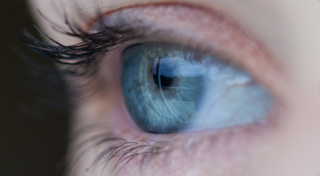"A Cast for the Eye after Retinal Surgery," by Yasser Elshatory, MD, PhD

Much like a cast immobilizes a limb and helps it heal, during retinal surgery, your surgeon may use an analogous immobilization/healing aid. Surgery on the retina that requires removal of the vitreous gel (called a vitrectomy) sometimes requires placing a vitreous substitute that exerts a force on the retina to flatten the retina. While the vitreous can be replaced with saline in cases where no such force is necessary, many retinal conditions such as retinal detachments and macular holes, require placing a gas mixture or oil in the eye. This gas or oil makes the vision blurry, because light does not pass through the gas and oil the same way it does through vitreous gel or saline. A retina specialist has special lenses that aid in focusing an image of their patient’s retina (on the specialist’s retina!) to assess the retina’s appearance and positioning. Much like a cast for a broken bone prevents one from using a limb, these vitreo...
